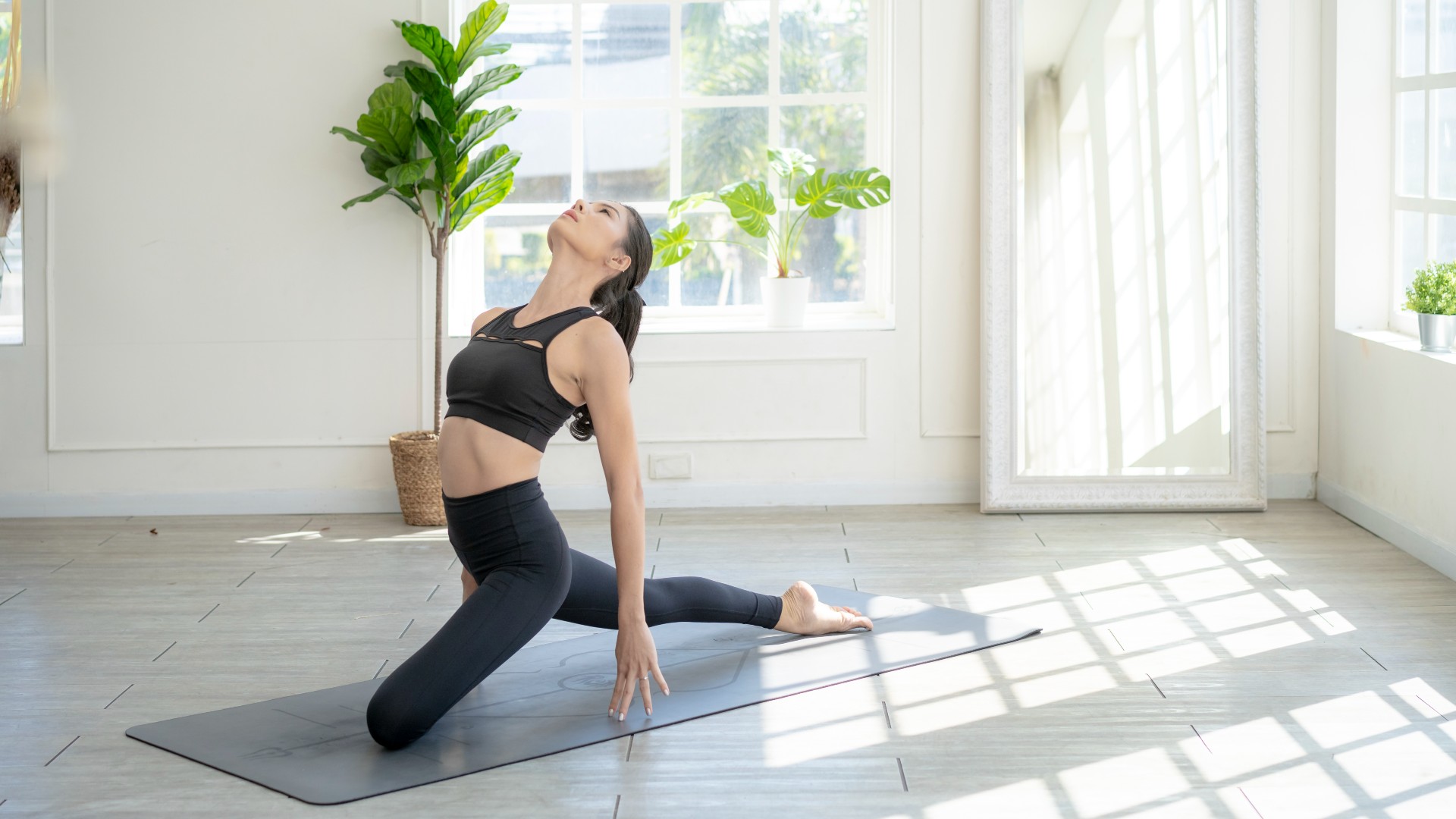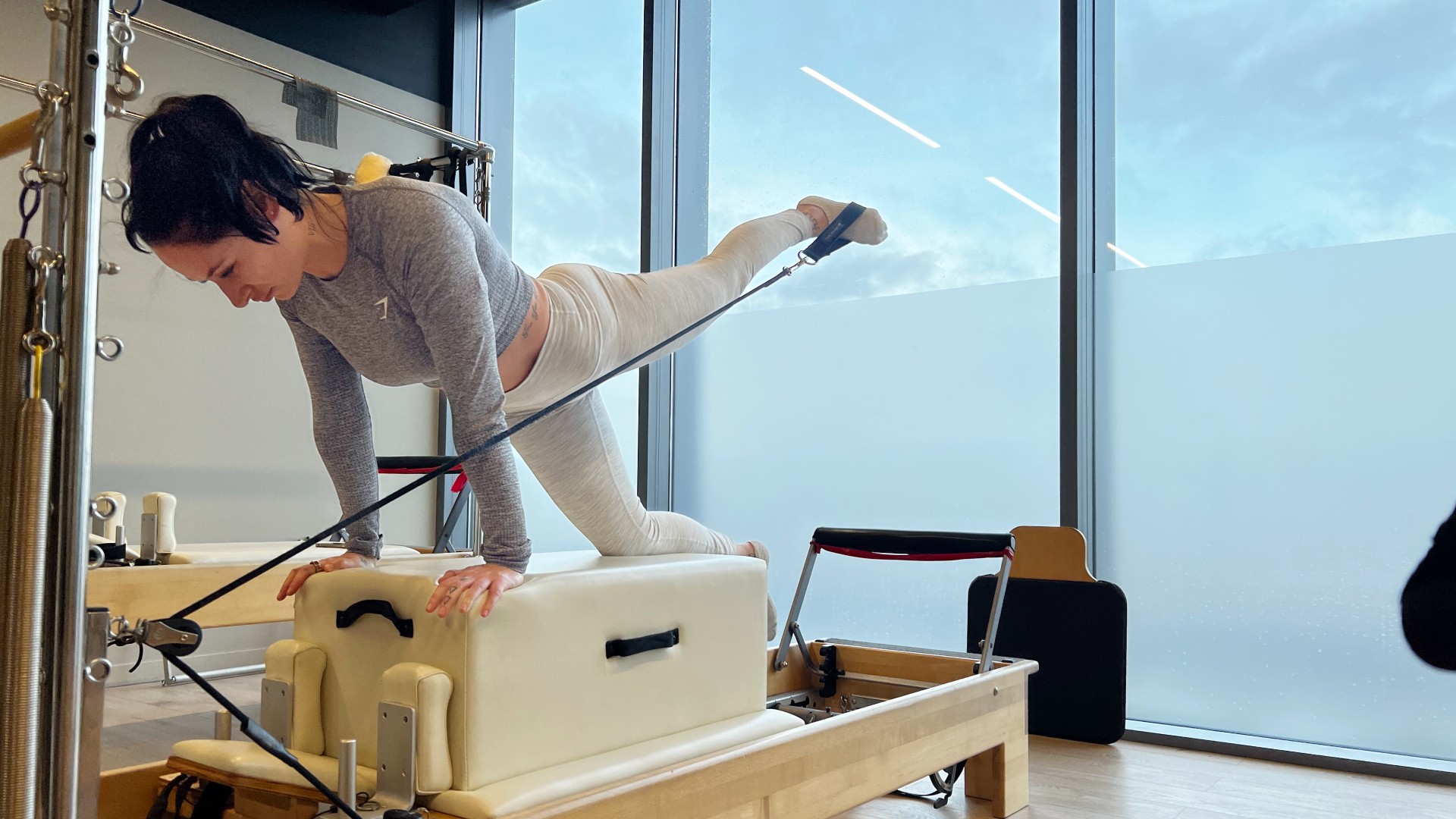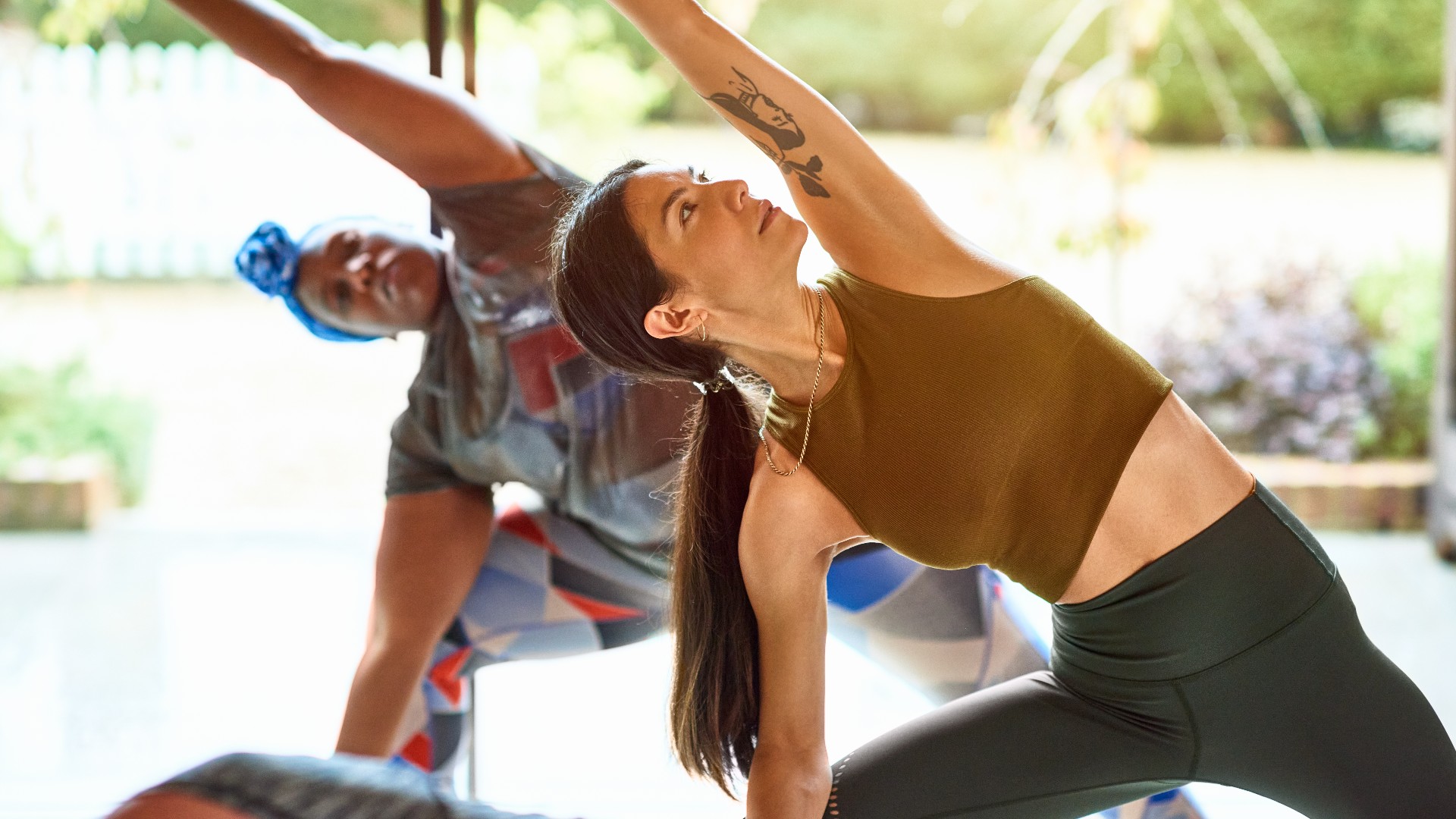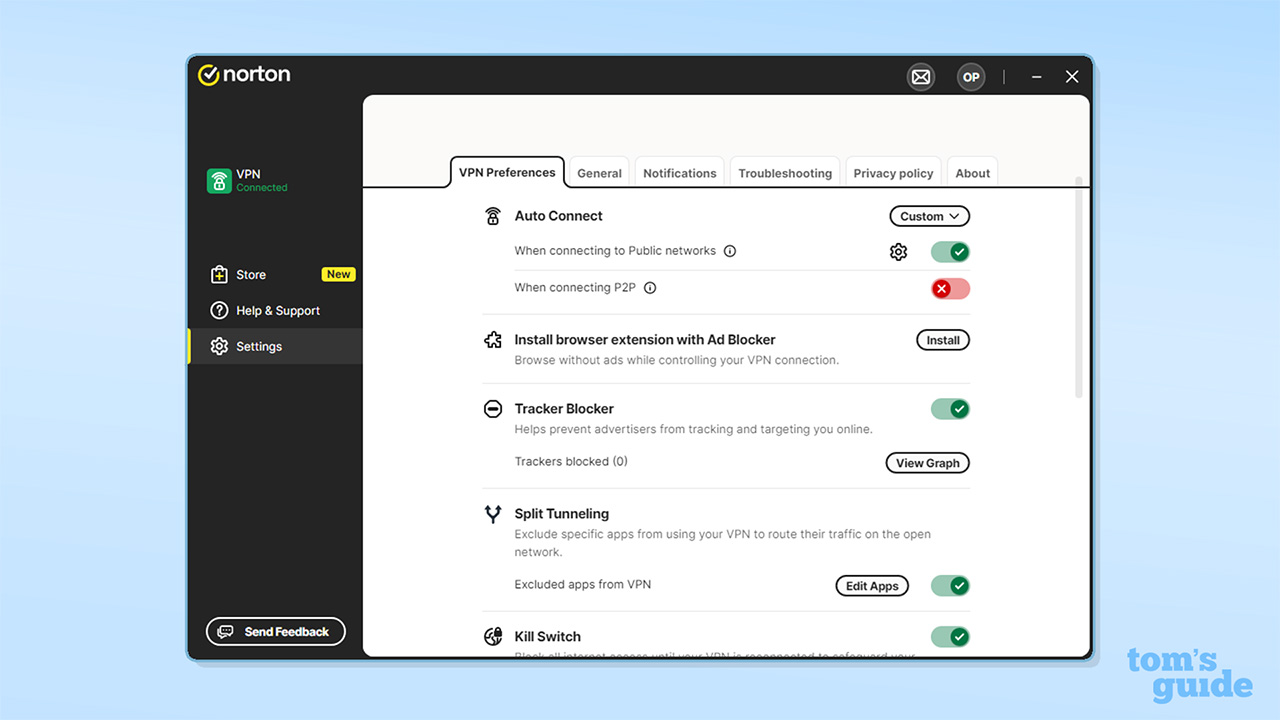
Yoga vs Pilates: which is better for burning calories? Both practices are known for benefits expanding far beyond calorie burn, but does one come out on top? We decided to find out.
Yoga and Pilates have burst into popularity over recent years, with #yoga and #Pilates pulling in billions of views on platforms like TikTok. They’re both renowned mindfulness practices that focus on connecting breath, mind, and body through movement. But while you won’t hit that high number on calorie burn, there are yoga and Pilates practices that could increase it — despite neither being considered out-and-out cardio that matches the likes of spinning or HIIT.
Before we delve in, the number of calories you can burn daily depends on various factors, including overall activity levels, sex, age, and body composition. We also burn calories in more ways than just exercising — like when we eat and sleep, believe it or not. That said, you can work out roughly how many calories you could expect to burn after just one hour of yoga or Pilates, including different class styles.
Grab one of the best yoga mats for Pilates and yoga, and find out more.
Yoga vs Pilates: benefits
Have you ever wondered what an hour of yoga does to your body? A lot, it turns out. Research tells us that regular yoga could build muscle strength, improve flexibility, balance and sleep, and boost mood. During a yoga class, you’ll adopt a series of asanas (yoga poses) that form a sequence, targeting most major muscle groups, including your legs, back, chest, shoulders, and core muscles.
However, different yoga styles serve various purposes. Dynamic and fast-paced yoga classes like rocket or power yoga will ramp up your heart rate and tap into cardio fitness through continuous flowing movement. Restorative slow-paced classes like Yin focus on developing flexibility in the major muscle groups using prolonged static stretches.
Pilates offers these same benefits, but this practice is renowned for its power to develop your core strength, including your abdominals, lower back, and pelvic floor muscles using a low-impact environment. Pilates focuses on repetitive, precise, and controlled movements for high reps, which could improve strength and endurance in the major muscle groups and the smaller muscles required for stability. You can find out what an hour of Pilates can do for your body here.
Get instant access to breaking news, the hottest reviews, great deals and helpful tips.
Yoga vs Pilates: which one burns more calories?

Aside from metabolic factors (like hormones and body weight), sleep, and age, exercise intensity is a key determiner of how many calories you will burn during and after a workout. Neither yoga nor Pilates are typically high-calorie burners, but if weight loss is your fitness goal, you can discover how to calculate your body fat percentage and why it matters here. If you want more specific stats, we recommend wearing one of the best fitness trackers or other wearables which produce results based on your heart rate and personal profile.
Overall, you’ll burn more calories during yoga if you exercise for longer or at a higher intensity and if you weigh more. The class type will also determine calorie burn; hot yoga and heated Vinyasa classes increase your heart rate and could work the body harder. Again, power or rocket are both faster and more challenging classes that could improve calorie burn.

On average, and according to this calorie counter (modeled on the Compendium of Physical Activities) you could expect to burn between 150-400 calories per hour of yoga. And a practice that meets a MET score (measurement of energy cost) of three or more could burn more calories. For example, a person who weighs 160lbs practicing a lighter intensity Hatha class (MET score 2.5) for 60 minutes could burn around 200 calories, whereas power yoga (MET score 4) could burn 305.
If we get more specific, one study found that men burned roughly 460 calories compared with women, who burned around 330 calories during Bikram (hot yoga).
Pilates depends on the same factors. Classes that use pacy sequencing, resistance, and weights could increase intensity and heart rate — I’ve taken some of these classes, and they’re more challenging than some strength programs I’ve faced. To make matters more confusing, Pilates classes are split into three ability levels: beginner, intermediate, and advanced — advanced classes tend to burn more calories, and Inferno Pilates (high-intensity hot Pilates) could potentially burn more.
Using the same metrics above, expect to burn roughly 230 calories per hour during a Pilates class. I dug a bit deeper using a calculator that allowed me to divide between mat, general, and reformer: results based on the same metrics showed ‘general’ Pilates (MET score 3) burn around 230 calories, mat Pilates estimated 267 calories (MET 3.5), and reformer 248 calories (MET 3.25). So, if you’re considering Pilates for weight loss — intensity matters (again).
How to burn more calories
If you want to burn more calories during yoga or Pilates, consider a faster-paced or more challenging class to increase your heart rate and work your muscles harder. Your muscles require energy for fuel, repair, and growth, so this could help you burn more calories, too.
A famous school of thought is that heated classes burn more calories, but although your body does have to work harder to cool you down, there’s limited evidence on whether it burns many more calories overall.
During Pilates, you could add the best resistance bands, small handheld dumbbells, and other bits of kit to increase intensity, and I love using the reformer to work my muscle groups hard.
Yoga and Pilates workouts we swear by
Yoga and Pilates breathing and meditative components could reduce stress levels by regulating your nervous system. Soothing the nervous system takes the body from its sympathetic nervous system to the parasympathetic — a rest and repair state.
If you fancy getting started with yoga or Pilates, I did yoga every day and here’s what happened to my body, or try this yoga for knee pain workout. Also, our fitness editor did Pilates every day for a month, this at-home Pilates workout with weights builds strength, and these are the 9 best Pilates exercises that target your core.
Bottom line
Yoga edges out Pilates in terms of overall calorie burn. However, metabolic responses to exercise and factors like stress, sleep, and exercise intensity will affect how many calories you burn during and after a workout. So if you want more accurate results, I recommend wearing one of the best fitness trackers or best smartwatches to measure your specific responses to exercise.
Next up: I don’t recommend calorie counting, and here are 5 exercises that burn more calories than running, does jumping rope burn more calories than running?

Sam Hopes is a level 3 qualified trainer, a level 2 Reiki practitioner and fitness editor at Tom's Guide. She is also currently undertaking her Yoga For Athletes training course.
Sam has written for various fitness brands and websites over the years and has experience across brands at Future, such as Live Science, Fit&Well, Coach, and T3.
Having coached at fitness studios like F45 and Virgin Active and personal trained, Sam now primarily teaches outdoor bootcamps, bodyweight, calisthenics and kettlebells.
She also coaches mobility and flexibility classes several times a week and believes that true strength comes from a holistic approach to training your body.
Sam has completed two mixed doubles Hyrox competitions in London and the Netherlands and finished her first doubles attempt in 1:11.
